Main Peace Park

Beez Neez now Chy Whella
Big Bear and Pepe Millard
Sun 5 Nov 2017 23:27
|
Main Peace
Park
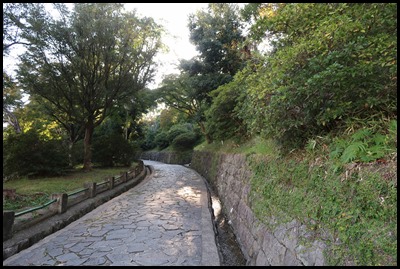 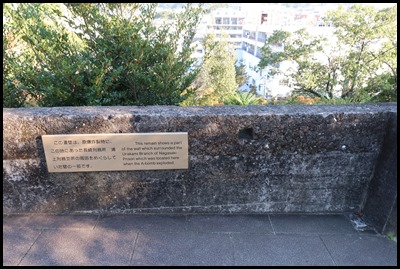 We left the lower Peace Park, crossed
the river and followed this path. Turning right, we
went up a steep set of stairs. At the top was a plaque on the wall. This
remain shows part of the wall which surrounded the Urakami Branch of Nagasaki
Prison which exploded here when the A-bomb exploded.
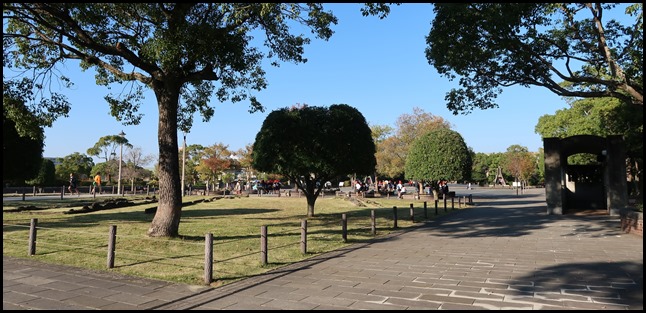 Left and right, we were in a huge space.
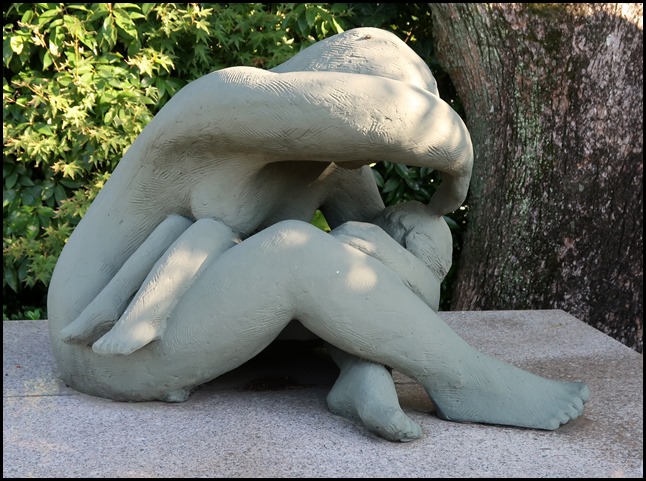 Protection of Our Future: This
was presented by the City of Middelburg (The Netherlands), Nagasaki’s sister
city, as a contribution to the “World Peace Symbol Zone” planned by Nagasaki
City. The statue shows a mother protecting her
infant-child from danger, representing that we must protect not only the
present generation but also the coming generation as well so that the people of
the world can live in peace together.
1983
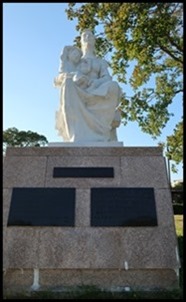 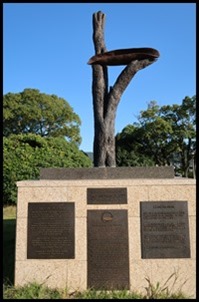 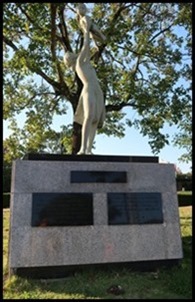 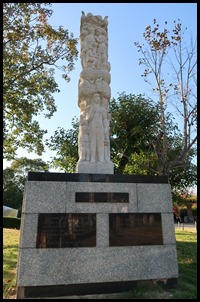 Around
the park are various memorials given to the city as a
gift of friendship, mainly by the ex-communist states of Eastern
Europe.
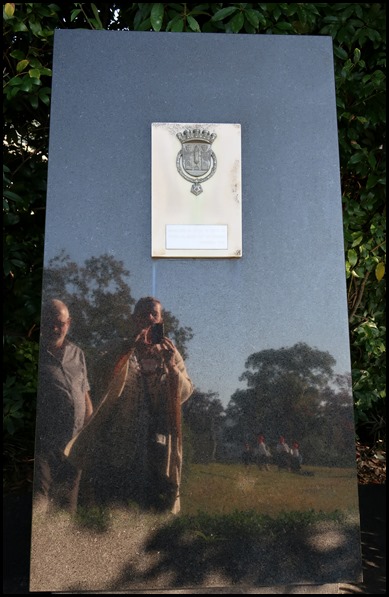 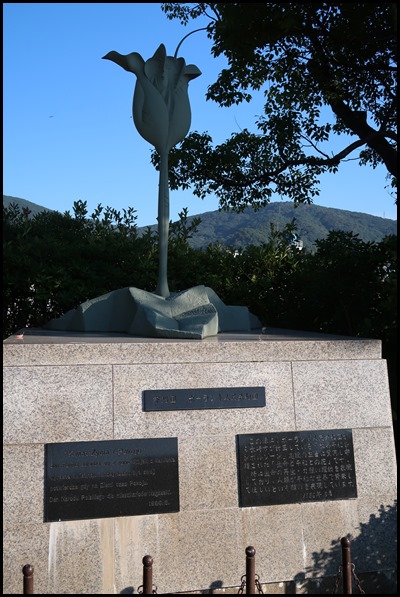 This monument was presented by
the city of Porto, Portugal, in 1978 as a symbol of
peace in commemoration of the sister city affiliation. In the monument is
inscribed “Homage of the City of Porto to the Atomic Victims of the Sister City
of Nagasaki - - November 1978. We couldn’t read the next one as it was in
Polish and Japanese but it was a gift from Poland in
1986.
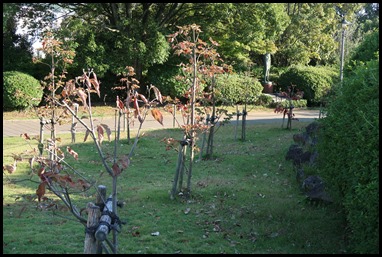 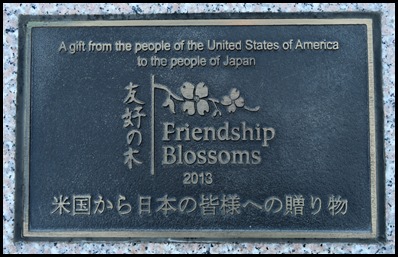 Some bushes given as Friendship Blossoms by the USA in 2013.
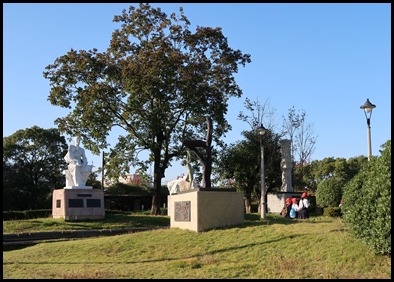 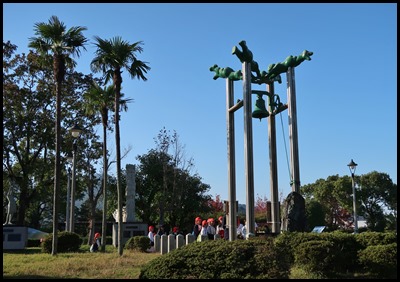 School
children were visiting the Park. The Peace
Bell but first, to our left the Fountain of Peace.
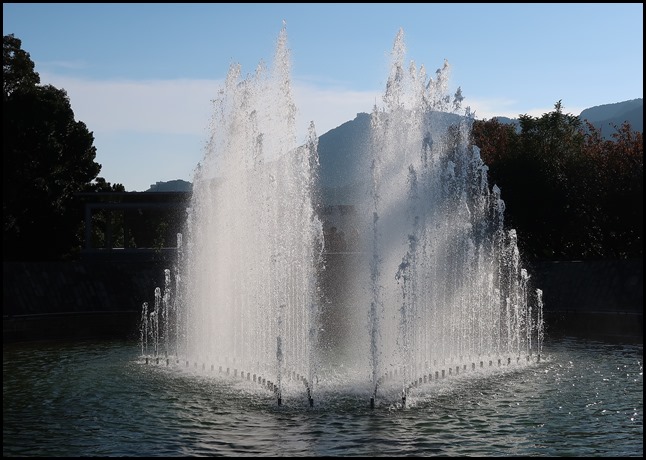 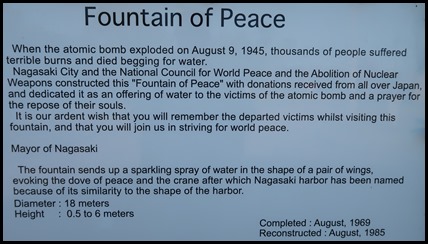 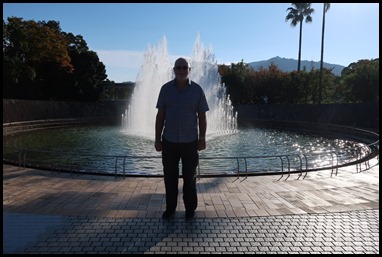 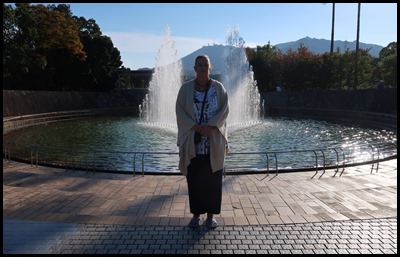 The Fountain of
Peace where we gathered our
wings.
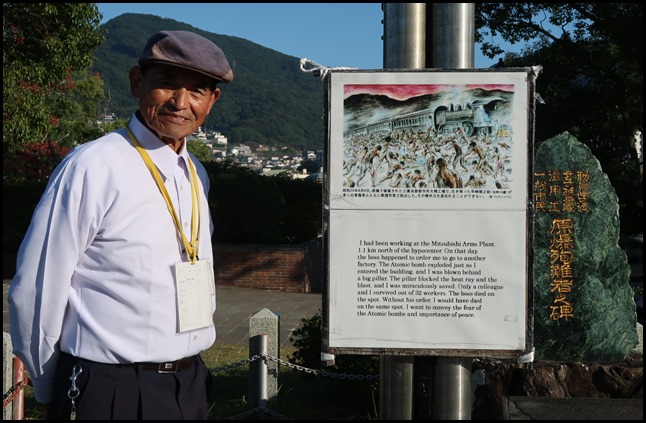 We headed toward the Peace Bell, met
by a ‘survivor’, could this man – assuming
he was twenty at the time, really be ninety-two........ OK let’s run with it and
see what happens.
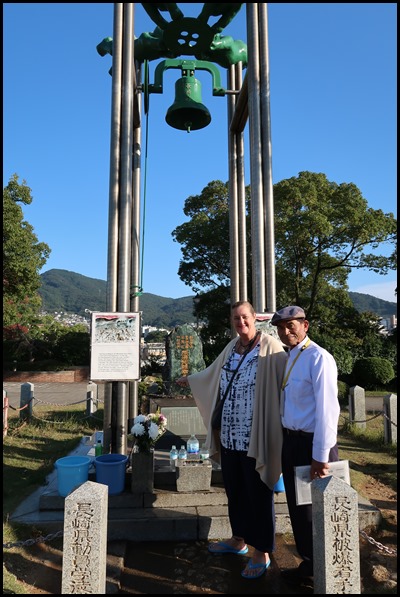 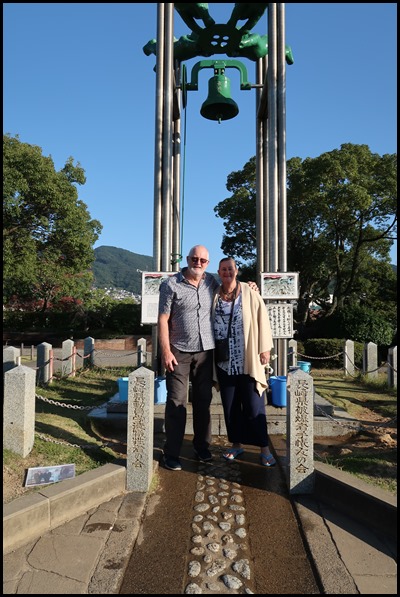 Our new friend insisted I pour water whilst posing, and then he wanted to take
a picture of the two of us.
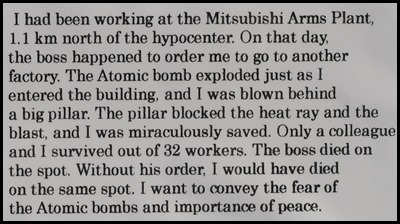 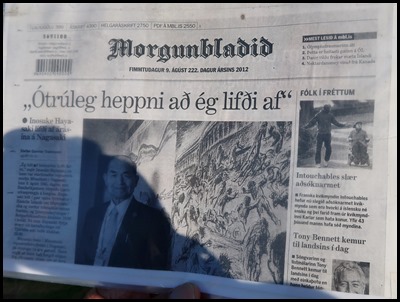 He handed us a
card with ‘his story’ and showed us a copy of a
newspaper article.................
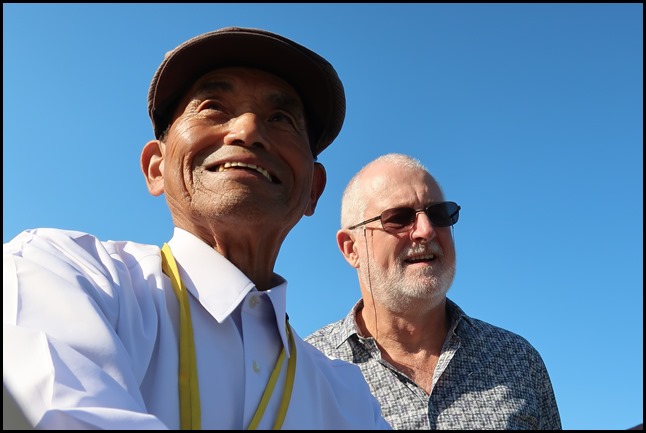 Could this man
really be a survivor ????
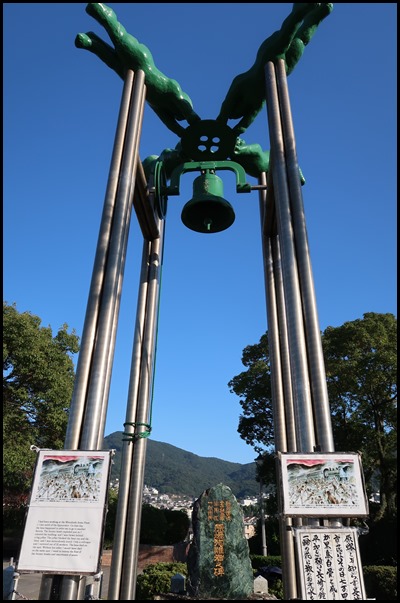 We did manage to get a picture of
the Peace Bell on its own -
but only just.
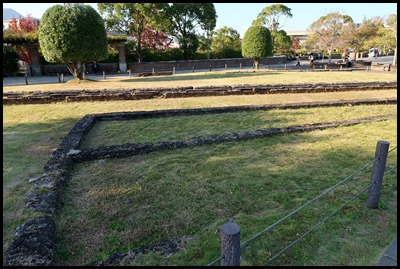 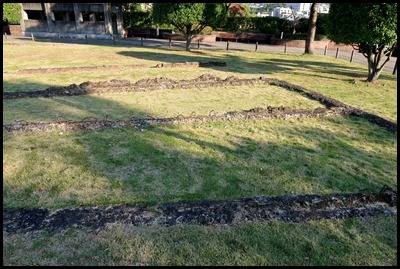 We left our ‘new friend’ and as we
walked we saw to our right and left remains in very straight
lines.
Site of the former Urakami Branch
of Nagasaki Prison, it was built on a site of 20,000 square metres, with its
offices covering 13,000 square metres. It was located between 100 and 350 metres
north of the hypocenter of the atomic bomb, and was the closest public building
to the hypocenter.
At 11:02 a.m. on August 9, 1945,
the explosion of the plutonium bomb killed 18 staff, 35 facility residents and
81 inmates (including 32 Chinese and at least 13 Korean inmates) at the prison.
In total 134 people died here. The wall surrounding the prison was 4 meters
high, 0.25 meters thick and made from steel-reinforced concrete; it was reduced
almost to its foundations. The wooden office buildings and kitchen were blown
apart and burned down completely, save for a single remaining
chimney.
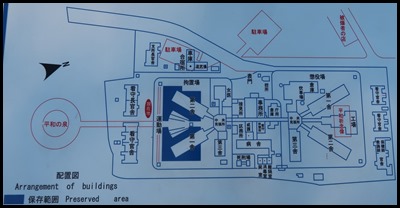 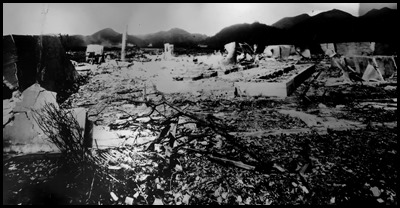 The prison
plan and shortly after the atomic
bomb.
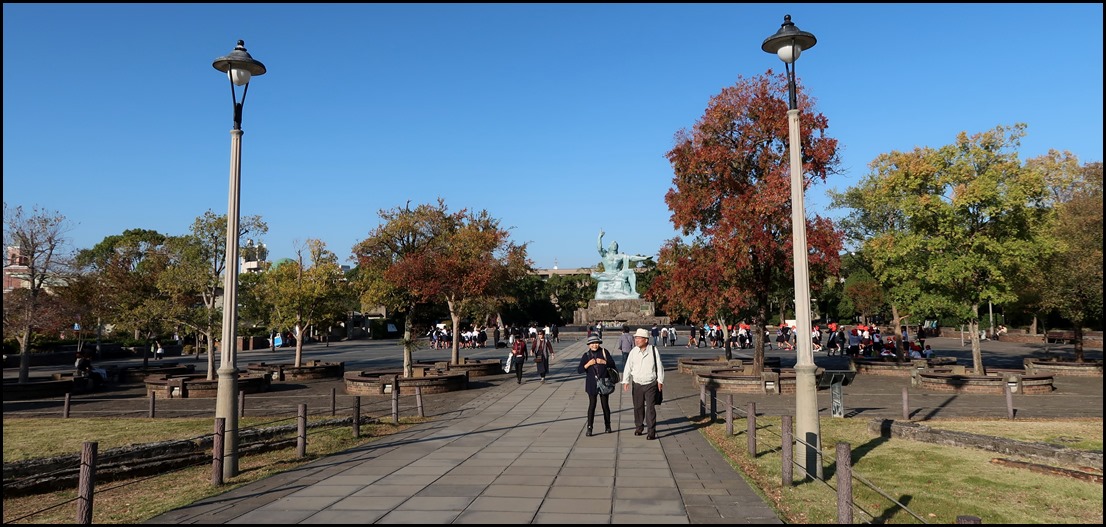 Time to make our way to the memorial that dominates the Peace Park, created by sculptor Seibou Kitamura.
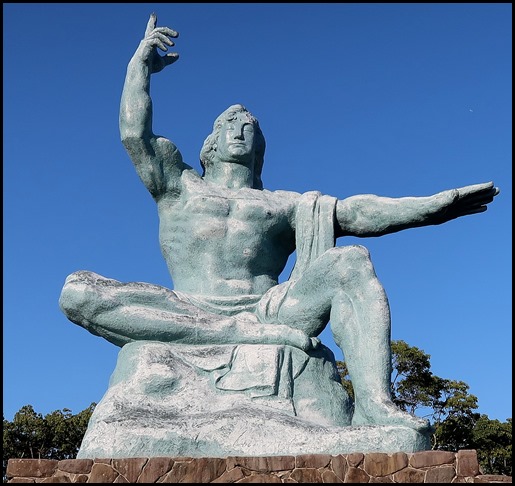
Heiwa Kinen-zo
or Peace Statue was erected by the citizens of
Nagasaki in August 1955, on the 10th anniversary of the devastation of this city
by the atomic bomb. Thanks to contributions from Japan and abroad, the ten meter
bronze statue, which was designed by Seibo Kitamura, was dedicated as an appeal
for lasting world peace and as a prayer that such a tragedy would never be
repeated.
The elevated right hand points to the threat of nuclear
weapons, while the outstretched left hand symbolizes tranquillity and world
peace. Divine omnipotence and love are embodied in the sturdy physique and
gentle countenance of the statue, and a prayer for the repose of the souls of
all war victims is expressed in the closed eyes. Furthermore, the folded right
leg symbolizes quiet meditation, while the left leg is poised for action in
assisting humanity.
The face does
not look Japanese because it is a “Person who goes beyond human
races.”
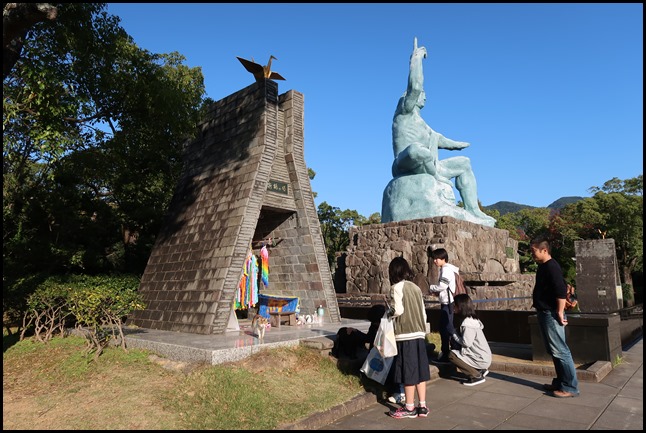 We leave the Park, passing the
Peace Crane and go in search of the Cathedral. One
backward glance as we walk around the back of the
statue.
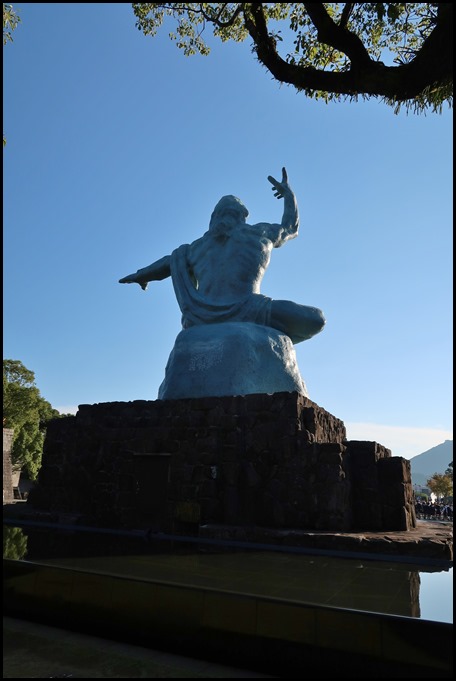
ALL IN ALL A PARK TO REFLECT IMPRESSIVE |